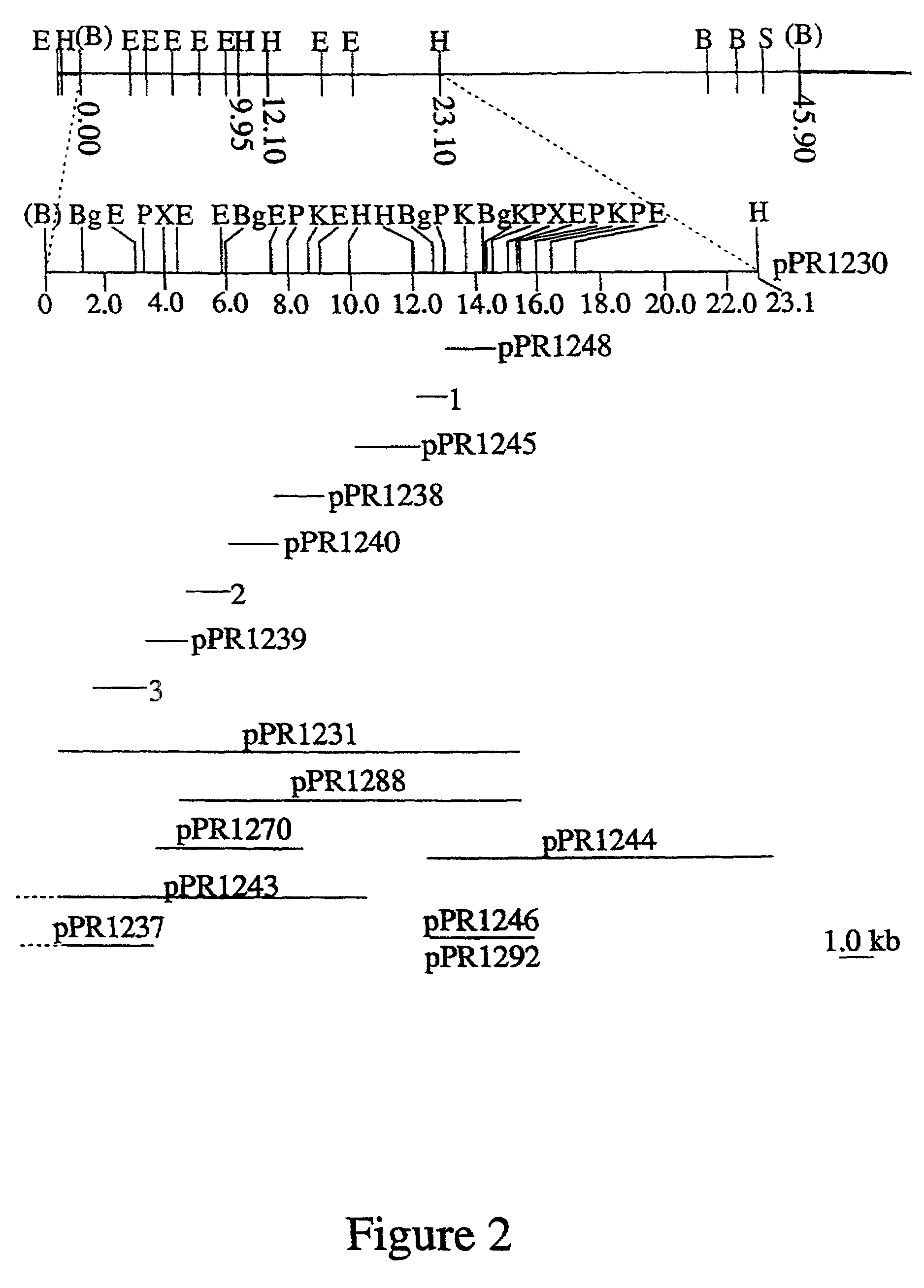Nucleic acid-based methods of detecting bacterial o-antigens
a technology of bacterial o-antigens and nucleic acid, which is applied in the field of nucleic acid-based methods of detecting bacterial o-antigens, can solve problems such as detection of false positives and potential life-threatening sequela
- Summary
- Abstract
- Description
- Claims
- Application Information
AI Technical Summary
Benefits of technology
Problems solved by technology
Method used
Image
Examples
Embodiment Construction
[0013]Whilst not wanting to be held to a particular hypothesis, the present inventors now believe that the reported false positives found with the Paton et al. method are due to the fact that the nucleic acid molecules employed by Paton et al. were derived from genes which have a putative function as a sugar pathway gene, [Bastin D. A. and Reeves, P. R. (1995) Sequence and analysis of the O antigen gene(rfb) cluster of Escherichia coli O111. Gene 164: 17–23] which they now believe to lack the necessary nucleotide sequence specificity to identify the E. coli O antigen. The inventors now believe that many of the nucleic acid molecules derived from sugar pathway genes expressed in S. enterica or other enterobacteria are also likely to lack the necessary nucleotide sequence specificity to identify specific O antigens or specific serotypes.
[0014]In this regard it is important to note that the genes for the synthesis of a polysaccharide antigen include those related to the synthesis of th...
PUM
| Property | Measurement | Unit |
|---|---|---|
| Temperature | aaaaa | aaaaa |
| Volume | aaaaa | aaaaa |
| Volume | aaaaa | aaaaa |
Abstract
Description
Claims
Application Information
 Login to View More
Login to View More - R&D
- Intellectual Property
- Life Sciences
- Materials
- Tech Scout
- Unparalleled Data Quality
- Higher Quality Content
- 60% Fewer Hallucinations
Browse by: Latest US Patents, China's latest patents, Technical Efficacy Thesaurus, Application Domain, Technology Topic, Popular Technical Reports.
© 2025 PatSnap. All rights reserved.Legal|Privacy policy|Modern Slavery Act Transparency Statement|Sitemap|About US| Contact US: help@patsnap.com



